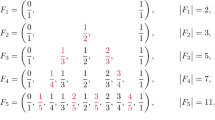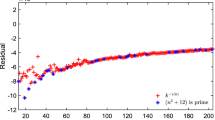Abstract
THE ancient problem: To construct a Magic Square with sixteen consecutive integers, may be regarded as a special case of the general problem: To construct a Magic Square with any sixteen positive integers, no two of which shall be identical. The solution of the problem thus generally enunciated throws much new light upon the ancient special one, and will, in fact, enable us to classify and tabulate its 880 known solutions (8×880, if we admit reversals and reflections of the same square to be “different”) much more scientifically than has hitherto been done.
This is a preview of subscription content, access via your institution
Access options
Subscribe to this journal
Receive 51 print issues and online access
$199.00 per year
only $3.90 per issue
Buy this article
- Purchase on Springer Link
- Instant access to full article PDF
Prices may be subject to local taxes which are calculated during checkout
Similar content being viewed by others
References
"Ouvrages de Mathématique." Par M. Frénicle . (La Haye, 1731.)
Author information
Authors and Affiliations
Rights and permissions
About this article
Cite this article
BERGHOLT, E. The Magic Square of Sixteen Cells. A New and Completely General Formula. Nature 83, 368–369 (1910). https://doi.org/10.1038/083368a0
Issue Date:
DOI: https://doi.org/10.1038/083368a0
Comments
By submitting a comment you agree to abide by our Terms and Community Guidelines. If you find something abusive or that does not comply with our terms or guidelines please flag it as inappropriate.



